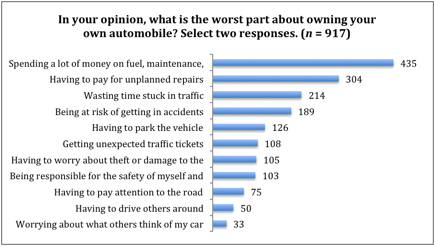A host of new car-sharing and ride-hailing services have chipped away at the landscape of car ownership over the past several years.
AlixPartners, a global advisory firm, estimates that car-sharing services have cannibalized sales of 500,000 vehicles over the past decade, with another 1.2 million units expected to be lost by 2021. (U.S. car sales in 2014 totaled 16.5 million units). These estimates do not even account for the impact from ride-hailing services such as Uber or Lyft.
While the economic crisis of 2008 is certainly a backdrop to the decline, a trend toward moving back into cities — where public transportation is often a preferable alternative to sitting on congested freeways — is also a contributing factor. The persistent costs of ownership (i.e., fuel, maintenance and parking expenses) are also a continued pain point for owners.

Many car manufacturers are responding by concentrating efforts on improving the product itself, incorporating new features from semi-autonomous driving modes to interior scent release. What entrepreneurs behind car-sharing and ride-hailing services have identified, however, is the fact that consumers are hungry for new ways to access the car, perhaps more than changes to the car itself. While we believe there is still significant opportunity to improve upon the automotive user experience, the vehicle itself is just one part of what it means to own a car.
A few companies have partnered with startup services to create “me too” hourly models, but they are late to the game. Manufacturers can reframe their current definition of innovation by taking inspiration from other markets and pushing automotive boundaries in the following ways:
- Invest In Loyalty Beyond The Product. Buying a car could automatically grant drivers access to a truly differentiated loyalty club that provides bespoke services, such as off-roading courses and fix-it tutorials. The loyalty club would introduce drivers to others with similar interests, and be a dependable service that assists drivers when they have mechanical issues.
- Maximize Utilization. A car could automatically make itself useful when it is not being driven, perhaps taking the initiative to recharge itself, taking itself for a maintenance checkup or providing autonomously driven rides for the elderly.
- Open The Lines Of Communication. Cars could weave themselves into the tapestry of the Internet of Things, communicating with other technologies that are important to drivers, including activity trackers, smart-home sensors and entertainment devices.
- Facilitate Efficiency. Cars could help drivers become more efficient citizens by alerting them to neighbors with similar commuting schedules and teaching them hypermiling driving techniques.
While these are simply a handful of potential possibilities, they require significant shifts in the business model to expand the total offering that cars provide to drivers. To reverse the current trajectory, where consumers see cars as purely utilitarian tools, manufacturers need to push beyond the current model — across product, business model and culture.